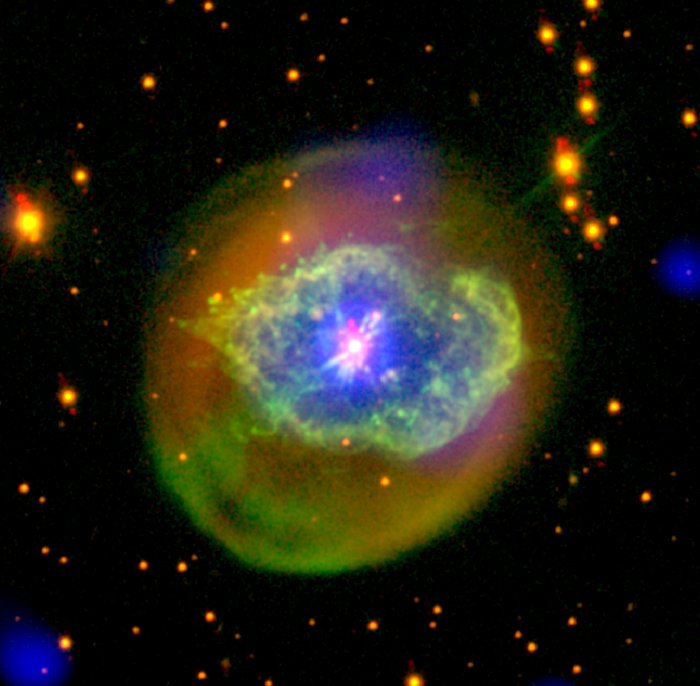
 Credit: ESA/XMM-Newton/J.A. Toalá et al.
Credit: ESA/XMM-Newton/J.A. Toalá et al.
Born Again
Stars with masses in the range 0.8 to 8.0 solar masses end their lives as spectacular objects known as planetary nebulae. These nebulae have nothing to do with planets as we know them; the name arises from the superficial similarity they have to the shapes of the classical planets as viewed through modest-sized telescopes. Planetary nebulae are in fact the expelled outer envelopes of dead, low- and mid-sized stars, which don't have the wherewithal to thermonuclearly fuse elements heavier than helium in their cores. The unstable last gasps of nuclear burning in the stellar interior produces large outbursts, or pulses, that drive off the outer stellar layers to form the nebula. Some of these nebulae have nearly circular or elliptical shapes, indicating a spherical or nearly spherical ejection from the star. Others, like the planetary nebula Abell 78 shown above, have a much more complex shape, indicating a complicated ejection pattern. Astronomers believe Abell 78 is an example of a "born again" planetary nebula, in which, for a brief time, helium fusion begins inside the star. This helium fusion can then generate pulses which drive away more of the star. In the case of Abell 78, this newer material is ejected at a much higher speed than the earlier ejection, so that the newer material collides with the older, and the resulting crash produces very high temperature gas that emits X-rays. In the composite image above, X-ray emission seen by the XMM-Newton X-ray observatory is shown in blue, while optical emission observed by the Nordic Optical Telescope highlight the glow of oxygen atoms (in green) and helium atoms (in red). These "born again" planetaries are rare; only one other such object is known.
Published: November 9, 2015
<
HEA Dictionary ● Archive
● Search HEAPOW
● Other Languages
● HEAPOW on Facebook
● Download all Images
● Education ● HEAD
>

Each week the HEASARC
brings you new, exciting and beautiful images from X-ray and Gamma ray
astronomy. Check back each week and be sure to check out the HEAPOW archive!
Last modified Tuesday, 27-Feb-2024 10:09:56 EST


